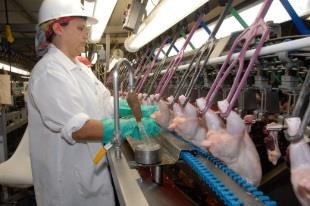Members of the Coalition for Poultry Safety Reform welcome the announcement today by the United States Department of Agriculture Food Safety and Inspection Service (USDA FSIS) launching a new effort to reduce Salmonella illnesses associated with poultry products.

The Coalition for Poultry Safety Reform is a newly-formed group composed of individuals and organizations, listed below, representing a broad array of interests and expertise related to poultry safety, including organizations that represent consumers and victims of foodborne illness, members of the poultry industry, leading food safety scientists, and current and former state and federal officials. Our multistakeholder coalition aims to serve as a resource for ideas and insights on effective, practicable, and science-based approaches to poultry safety reform that will benefit the public by reducing foodborne illnesses while ensuring continued consumer access to safe, affordable food.
We applaud Secretary Tom Vilsack and Deputy Under Secretary Sandra Eskin for demonstrating strong leadership and commitment to meaningful poultry safety reform aimed at reducing illnesses from Salmonella.
Decreasing Salmonella and Campylobacter contamination of poultry products is a top priority of the coalition. The rates of illness in the United States due to Salmonella and Campylobacter have remained persistently high for the last 20 years, despite efforts by federal regulators aimed at reducing bacterial contamination in poultry products. The announcement today by USDA FSIS addresses Salmonella, but does not address Campylobacter.
In the announcement, USDA Secretary Vilsack committed to “taking action to help prevent Salmonella contamination throughout the poultry supply chain and production system to protect public health.” The agency laid out a process for Salmonella reform that will begin with stakeholder feedback on specific strategies, including pilots to gather data and information.
“Reducing Salmonella infections attributable to poultry is one of the Department’s top priorities,” said USDA Deputy Under Secretary Eskin, who is leading the initiative.
Throughout this reform process, the coalition will be advocating for comprehensive reform that fully upgrades the current regulatory system to protect public health. Specifically, members of the coalition believe that:
The current system for regulating poultry safety is broken. While current prevalence-based pathogen reduction performance standards are leading to reduced Salmonella levels in products, the performance standard method is not producing the desired public health outcomes.
To achieve better results, USDA must transform and strengthen its standards. The current performance standards system should be replaced with standards that are objective, risk-based, achievable, enforceable, and flexible enough to adapt to emerging evidence and the latest science. Modernized standards should not stifle innovation. Instead, they should invite innovation and technological development.
Food safety should extend from farm to fork. While the USDA FSIS cannot directly regulate food safety practices on the farm, a modernized Hazard Analysis and Critical Control Point (HACCP) framework should address risk reduction across the full production process from raw material to finished packaging, including defining the responsibility of poultry processors to consider preharvest practices and interventions in their HACCP plans. The plans should also verify that suppliers of live birds have implemented scientifically appropriate risk-reduction measures in accordance with modern best practices.
USDA must address both Salmonella and Campylobacter in poultry. Salmonella and Campylobacter should be addressed in parallel but separate proceedings, as larger knowledge gaps exist for Campylobacter than Salmonella and different timelines and risk mitigation approaches may be necessary. This includes reviewing and reinvigorating programs around Salmonella that exist within the National Poultry Improvement Plan.
Regulatory reform should be paired with investment in research. While the science has advanced sufficiently to support regulatory improvements today, ongoing research is also needed to support continued progress towards reducing Salmonella and Campylobacter, including epidemiologic data and analysis to improve attribution of illness to specific commodities and products.
Click here to see more...